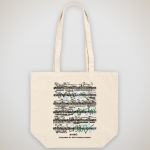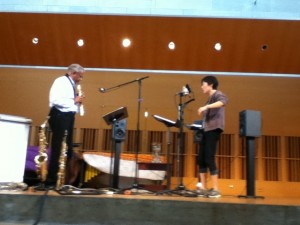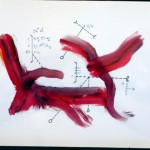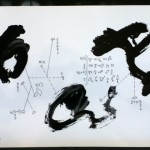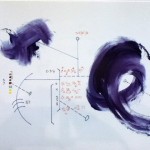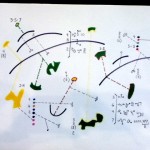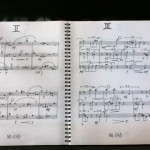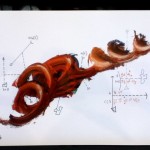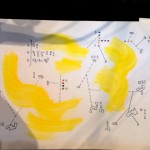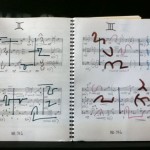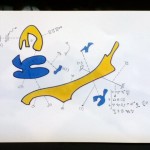The following is based on a presentation I recently did during a class visit at Dartmouth College.
When the pandemic hit, live in-person performances were suddenly cancelled, the phrase “force majeure” was thrown around to nullify contracts, and the organization had to quickly reevaluate its raison d’être as well as shift its PR strategy. In the beginning, we probably didn’t understand its severity, or perhaps we were in denial. What we had thought would be a few months became half a year, a year, and now we are hearing that normalcy, whatever that means, may not be back until perhaps 2022. It was, and still is, a terrible and difficult time for all of us. There will be no easy way out of this situation. Throughout it all, I had a job as the executive director of an arts organization. I looked at five criteria:
- Visibility
- Relationship with the audience
- Community
- Funding
- Creativity
Visibility
Visibility today includes exposure in traditional mass media as well as social media where self-generated content can be disseminated to the masses. It is usually a symbiotic process on our scene; presenters or labels and artists work together to publicize events or album releases. For example, when I work with a festival, I will be in close communications with their communications team about when to announce (embargo), contents of the release including press photos, discuss press requests and promote the event to our networks.
Once the pandemic hit, the symbiotic relationship with presenters and their huge networks disappeared along with live in-person performances. However, new relationships quickly strengthened, namely arts organizations working with other arts organizations and amplifying visibility together. This was already going on before the pandemic because artistic collaborations are a natural part of our work, but I believe I am seeing an increase in number of requests our organization receives for collaborations, consultations and pedagogy. We are all searching for ways to maximize our new two-dimensional platform: the screen. Organizations working together meant a larger network and reach.
The focus of live performance is in the moment, with a medium length pre-event publicity often in the form of “what to do and see” articles, and a very short post-event publicity in the form of reviews. Now, events were live streamed or taped beforehand, and the post-event publicity has grown a very long tail. The International Contemporary Ensemble, NYPL and Tri-Centric collaborated to produce a Braxton75 event which was broadcast over Facebook and YouTube (I.C.E. was the lead organizer). That event produced the wonderful lecture on the music of Anthony Braxton and an interview with the ensemble Thumbscrew, both of which can be promoted independently. Tri-Centric’s Carl Testa and Belgian guitarist Kobe Van Cauwenberghe worked together for a live streaming EEMHM performance which was then written up in a wonderful interview article.
Basically, we moved to a two-dimensional digital platform sans geographical constraints, and an event format which could be synchronous or asynchronous. The more organizations work together, the wider our reach (and it’s usually more fun). We are definitely making more use of post-event publicity. I don’t see this as a replacement of the old; in-person live performances cannot be replaced. I see this as a branching off, with its own modest possibilities. We were also fortunate to be able to work with many artists and ensembles interested in performing Braxton works, of which a sample can be seen on this YouTube playlist.
Relationship with the audience
In-person events were where artists could interact with the audience, and we missed those moments terribly. Here, I had to rethink what it was that happened between audience and artists during a performance. I always felt that there was an exchange going on between the audience and artist, in the form of attention for experience. According to Wikipedia, “Attention remains a crucial area of investigation within education, psychology, neuroscience, cognitive neuroscience, and neuropsychology.” For me, attention is a finite gift, zero sum, as explained by Michael Goldhaber in a recent NYT opinion piece. A performance space is usually set up so that the finite attention won’t be taken away from the action on stage: a bright elevated stage with the audience sitting in the dark. So, could I somehow distill this essence and apply it in another way?
The out-of-the-box idea was a tote bag with a musical score. A score, from a communication perspective, is music trapped in ink, a message which can be transmitted to and decoded by someone other than the composer. During the pandemic, we can’t interface with the audience in person. The tote would be a way for us to reach the audience, to disseminate the music, and for us to hopefully still be present in their lives. This bag was used as part of the 2020 year-end fundraising campaign and performed remarkably well. We were also able to communicate with the supporters while mailing the totes. It was not a substitute, but it was something. Otherwise, we kept up our regular newsletters to inform our audience of any activities such as online performances of Braxton works. (As an aside, an activity such as making a tote bag can help boost intraorganizational morale. Communication strategies should also take into account issues of communication among the board and staff of a nonprofit.)
Community
Without the community of artists, we would not have a scene. There is no solution to what is going on now during the pandemic, with artists out of work, moving away, going back to school, etc. Marshall McLuhan’s global village has encroached on a scene which thrived on propinquity, the in-person full-body experience of playing music together in the same room. For the moment, all we can do is to try our best to support each other, and if we can highlight each others’ works somehow, e.g., a newsletter, that should count for something. It’s similar to ingredient branding except we have become the ingredients. This is an evolving situation. We probably will not understand the full impact for a few years. Although it is important that we do our best to keep the community intact, the reality is that the community probably has become dormant and will certainly undergo a change. A desert bloom waiting to happen, waiting to rebound.
Funding
Another difficult area, but if all of the above somehow came together, then there might be wonderful people and institutions who can see value in what an organization does and be inclined to support it. I am always so thankful for donors who generously support arts organizations. At the same time, I see it as a responsibility for those who receive the money to keep delivering the best. And what is the best during a pandemic? That is a key question that I have no answer for. I also applied to grants and loans; got rejected by two grants but did receive two forgivable loans for the organization. For the moment, things are okay, but there is no guarantee for the future.
Creativity
An arts organization can’t stay static. I have no answer to the current situation except to say that crisis situations will always bring about change. Whether that is positive or negative or both will depend on the organization. In my professional experience, the ability to navigate crisis situations depends largely on the ability for the people involved to be flexible. Also, whatever issues that existed prior to the crisis will most likely be exacerbated. In some cases, one crisis may have already been brought about by preexisting issues but were somehow hidden or tolerated, while another crisis pushes the organization over the edge so that those hidden issues would have to be dealt with. The crisis may be a way to tackle those issues head-on and resolve them once and for all.
